Bibingka Bisaya recipe is a Filipino rice cake it is a variation of the traditional bibingka, a type of rice cake that is commonly served during the Christmas season in the Philippines.
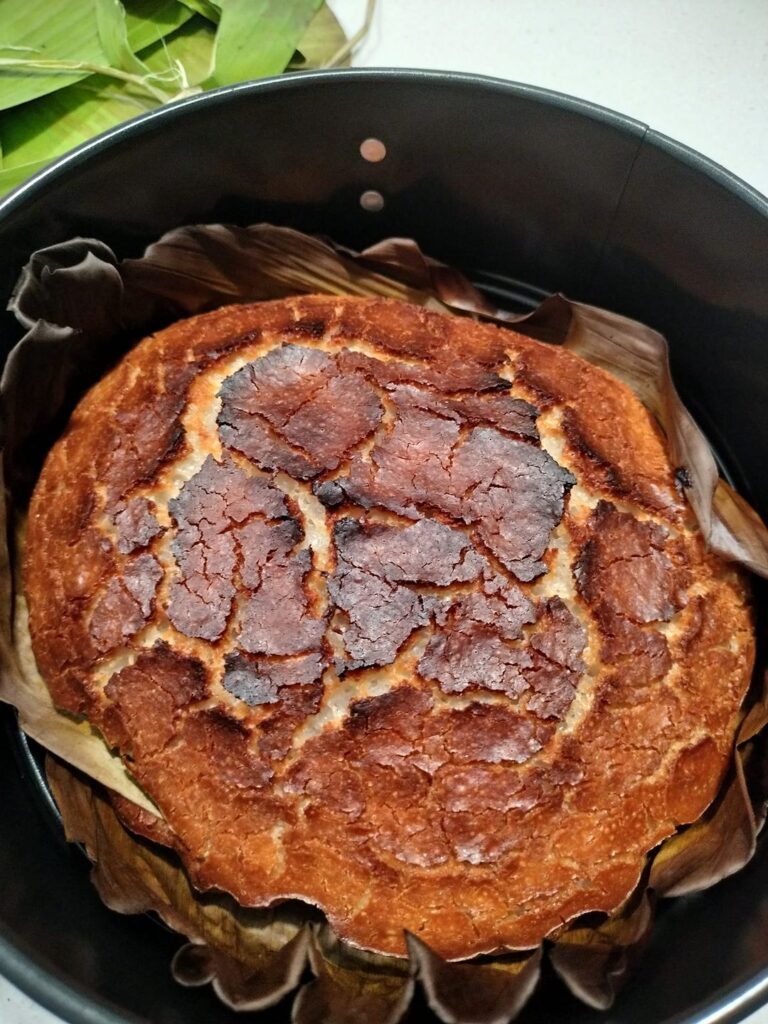
Bibingka Bisaya recipe typically includes rice flour, sugar, coconut milk or tuba, eggs, and grated coconut. Bibingka Bisaya is often enjoyed as a snack or dessert, especially during fiestas, Christmas celebrations, and other special occasions.
Its unique taste and cultural significance make it a beloved delicacy among Filipinos. Now we will learn how to make this recipe easily.
Ingredients
- 2 cups rice flour
- 1 cup sugar
- 1 cup coconut milk or tuba (coconut wine)
- 3 eggs
- 1/2 cup grated coconut (for the batter)
- Banana leaves (for lining the molds)
- 1/4 cup grated coconut (for topping)
Optional toppings:
- Salted egg slices
- Kesong puti (white cheese)
- Butter or margarine
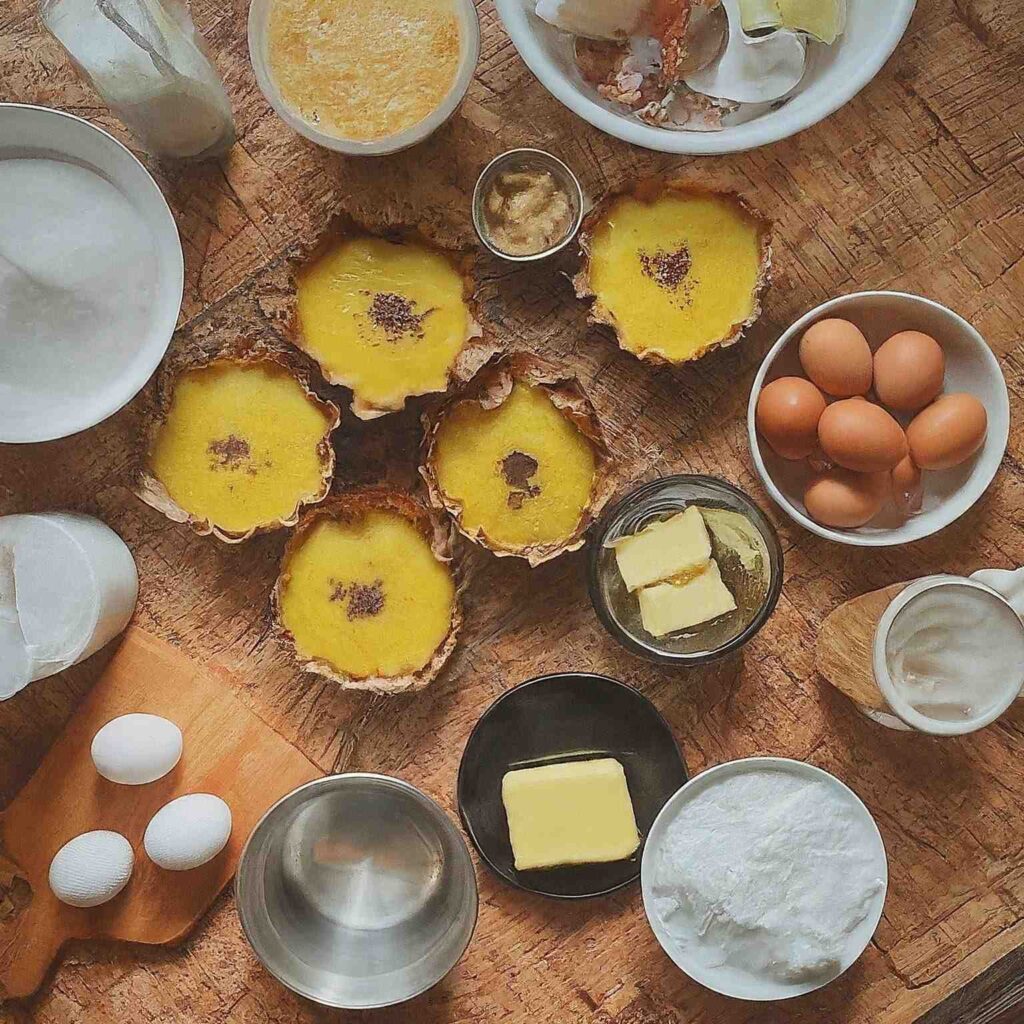
Instruction
- Set the oven’s temperature to 175°C/350°F. For a more genuine baking experience, you can utilize a clay oven or a traditional charcoal-fueled oven.
- Mix together the rice flour, sugar, eggs, coconut milk (or tuba), and half a cup of grated coconut in a large mixing bowl. Blend until completely smooth.
- Line the molds with banana leaves. This not only adds flavor but also prevents the bibingka from sticking to the molds.
- Pour the bibingka batter into the molds, filling them about halfway.
- Place the molds in the preheated oven and bake for about 20-25 minutes or until the edges turn golden brown and a toothpick inserted into the center comes out clean.
- Once cooked, remove the bibingka from the oven and let them cool for a few minutes.
- Serve the bibingka topped with grated coconut and optional toppings like salted egg slices, kesong puti, and a dollop of butter or margarine.
- Enjoy your homemade Bibingka Bisaya as a delightful snack or dessert!
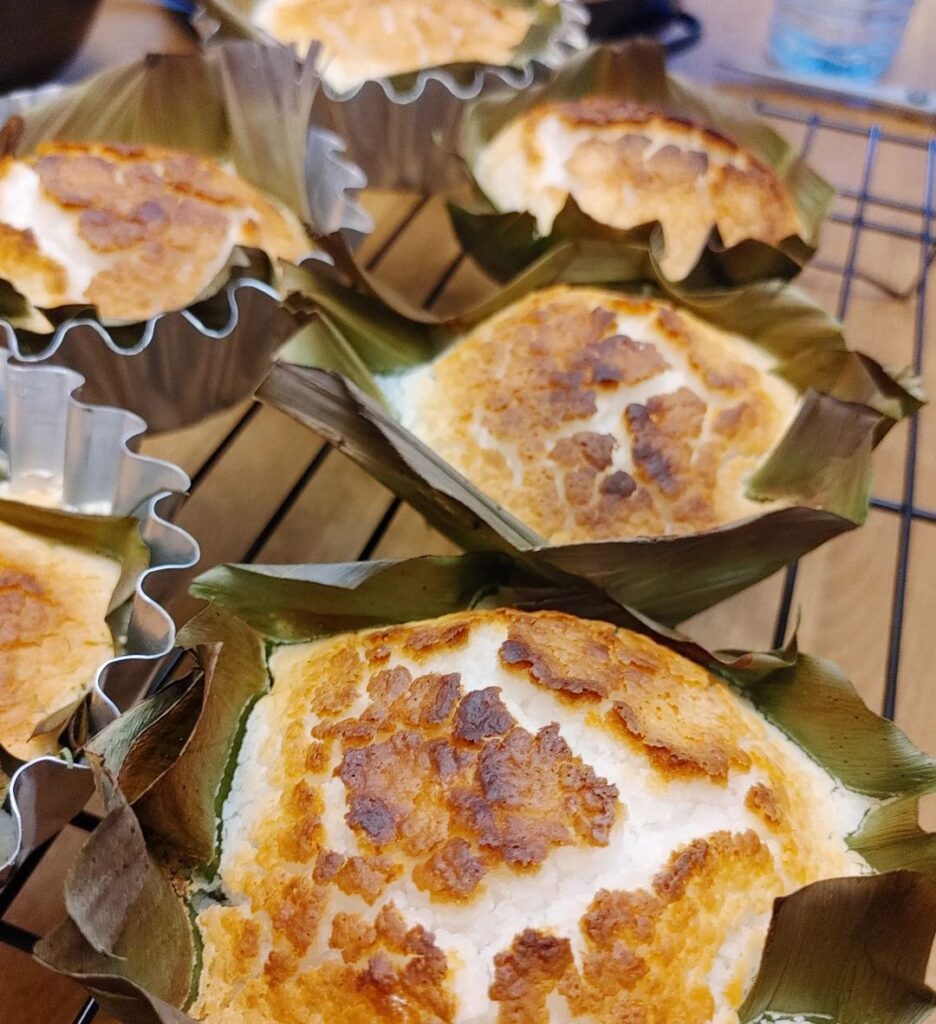
Bibngka Bisaya With Rice Flour
Since rice flour is used to make the galaping, no overnight soaking or milling is required. This process is convenient for instant cook.
To avoid overheating your blender, pulse a tiny amount of rice and water/coconut milk at a time if you’re using one. The finer you blend your rise, the finer the texture of your bibingka.
Occasionally, the recipe’s water or coconut milk amount needs to be changed.
The size of the bibingka and the cooking technique will determine how long it takes to cook.
You can top your bibingka with buko, cheese, or salted eggs.
Tips for making bibingka bisaya recipe
- It’s getting ready. first of all In order to avoid stress, I normally prepare the components of bibingka bisaya recipe ahead of time.
- Prepare the banana leaves first. When it’s time, examine the banana leaves and dispose of any damaged ones, thawing any frozen ones first. Clean and pat dry.
- Slice the leaves into circles using a circular bowl, then place them directly in the oven burner and move the fire carefully around the leaves until they are glossy. Put it in a muffin pan.
- Second, I measure and incorporate the coconut milk into the rice.
- Third, combine the coconut batter and rice flour components.
- Fourth, you are now prepared to begin cooking.
Watch Video
Video Credit Frau Home Baker
Bibingka bisaya serving Ideas
- Along with Fresh Fruits: Include the Bibingka Bisaya with a platter of fresh fruits, such as pineapples, bananas, or mangoes. The crisp fruits offer a delightful counterpoint to the richness of the rice cake.
- Top with butter: Spread a thick layer of butter on top of the Bibingka Bisaya while it’s still hot. A wonderful flavor will be created when the butter melts and combines with the cheese and salted egg.
- Match with savory foods: Although Bibingka Bisaya is a sweet dessert, it goes well with savory snacks like fried fish or roasted peanuts because of its cheesy and salty toppings.
- Filipinos love: bibingka bisaya, which is typically served on festive occasions like Christmas or Easter. Enjoying this delicious food and making treasured memories is best done with friends and family.
- Hot beverage: like tea, coffee, or hot chocolate are frequently served with bibingka bisaya. A cozy and fulfilling sensation is produced by the warm beverage with the warm Bibingka Bisaya.
- Traditional Style: Serve the Bibingka Bisaya on banana leaves, which improves the flavor and provides a decorative element. Add some grated coconut to the top to give it more taste and texture.
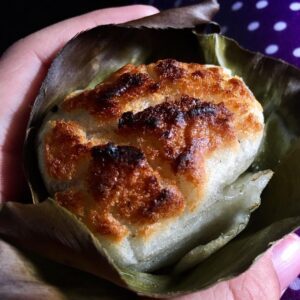
Feel free to get creative with your presentation and serving ideas, and don’t hesitate to customize the toppings and accompaniments based on your preferences and what’s available to you!
Try our most loved recipes
Perkins Potato Pancakes Recipe
Outback Steakhouse Brussel Sprouts
Chilindrina Food Recipe
Beef sabana de Res recipe
Remarks
We hope you had a taste of the Philippines and loved our recipe for Bibingka Bisaya recipe. Creating this delectable dessert is a great opportunity to learn about other flavors and cultures or to feel more connected to your history. We’re confident that Bibingka Bisaya will become a staple in your recipe collection, whether you serve it for a special event or just enjoy it as a sweet treat. We appreciate you cooking with us, and enjoy your food!
HOW IS BIBINGKA TO STORE?
Bibingka keeps well in the refrigerator when kept in a sealed container. If you make extra for later use, you may freeze them separately wrapped in cling wrap after they’ve been refrigerated for up to four days. First, let it thaw and then give it a 40-second microwave heat.
What flavor does Bibingka have?
Bibingka goes well with a variety of toppings, such as salted egg, and tastes like sweet rice cakes with a hint of coconut milk. Their texture is soft and slightly chewy, which is their signature.
Who invented the Bibingka?
Indonesia and the Philippines are the origins of bibingka. This is a typical Filipino baked rice cake that is frequently consumed during the Christmas season.
What is bingka bisaya?
There is no difference between (Bingka and Bibingka) in the pronunciation and meaning of the word sounds almost the same.
The texture of bengka, a sweet rice cake, is somewhat creamy. Traditionally, galapong—milled glutinous rice—is used to make it, although cassava and flour can also be used. Glutinous rice that has been ground up is combined with butter, sugar, and coconut milk.
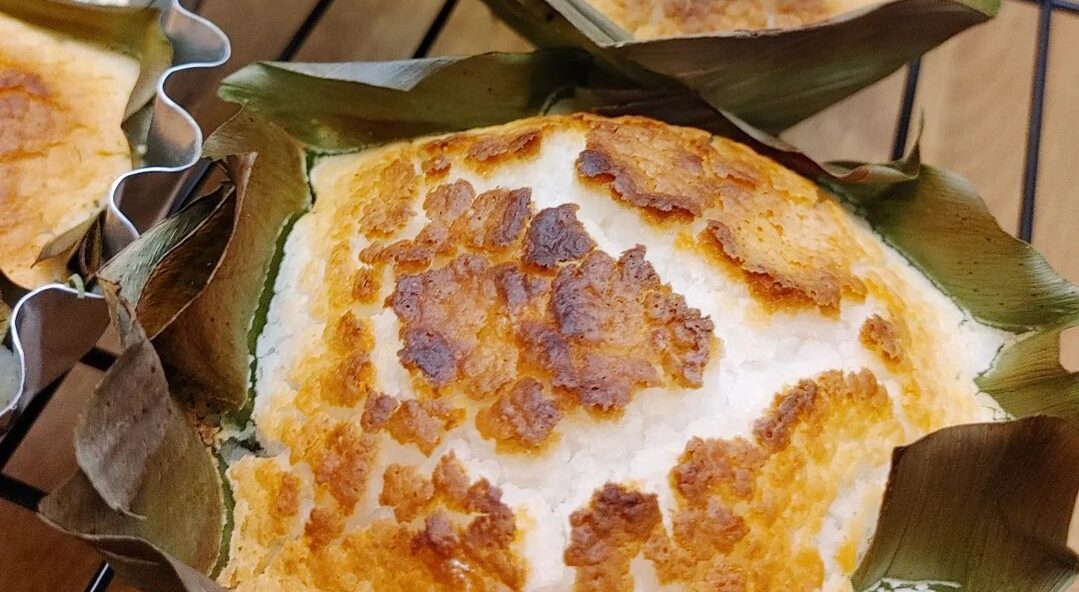
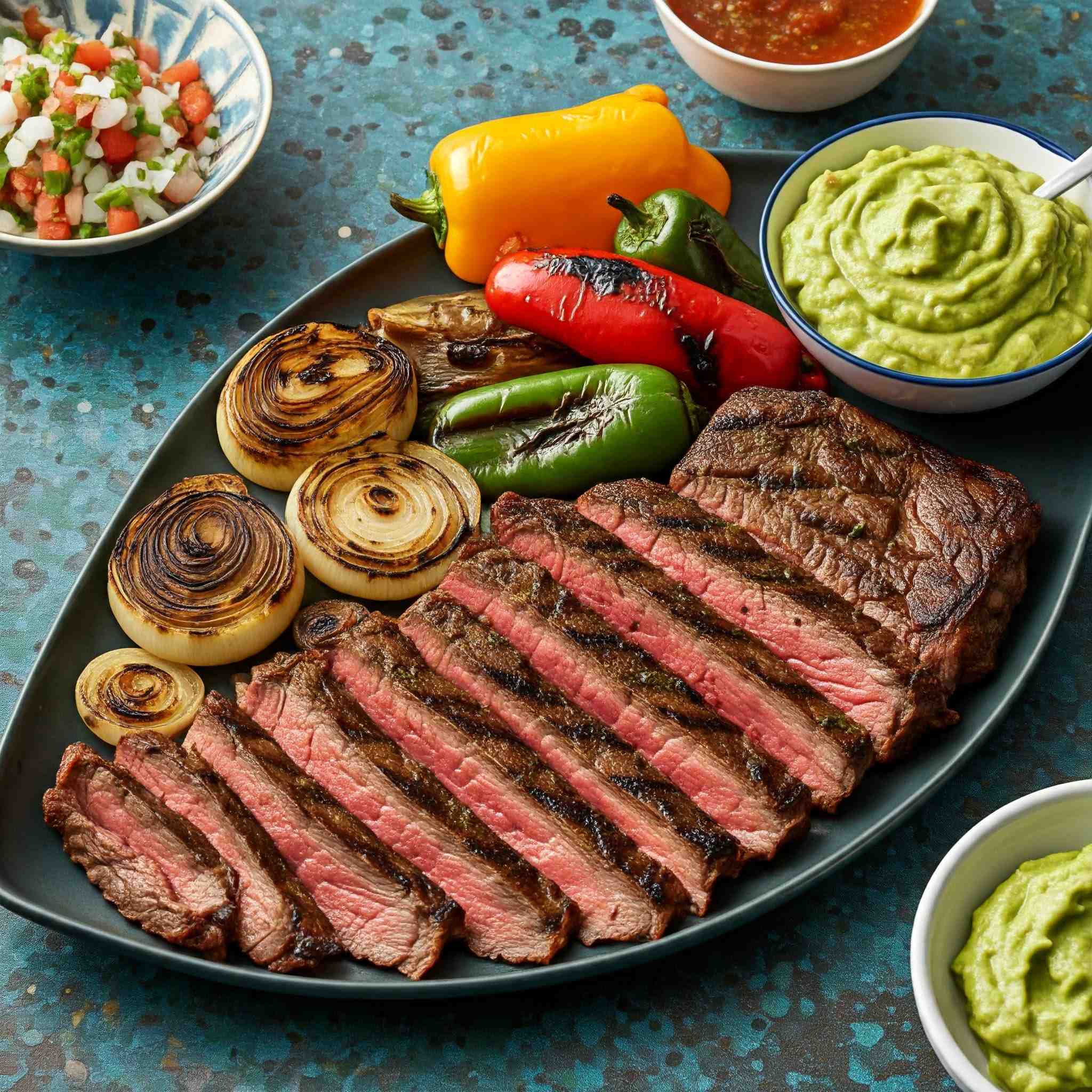
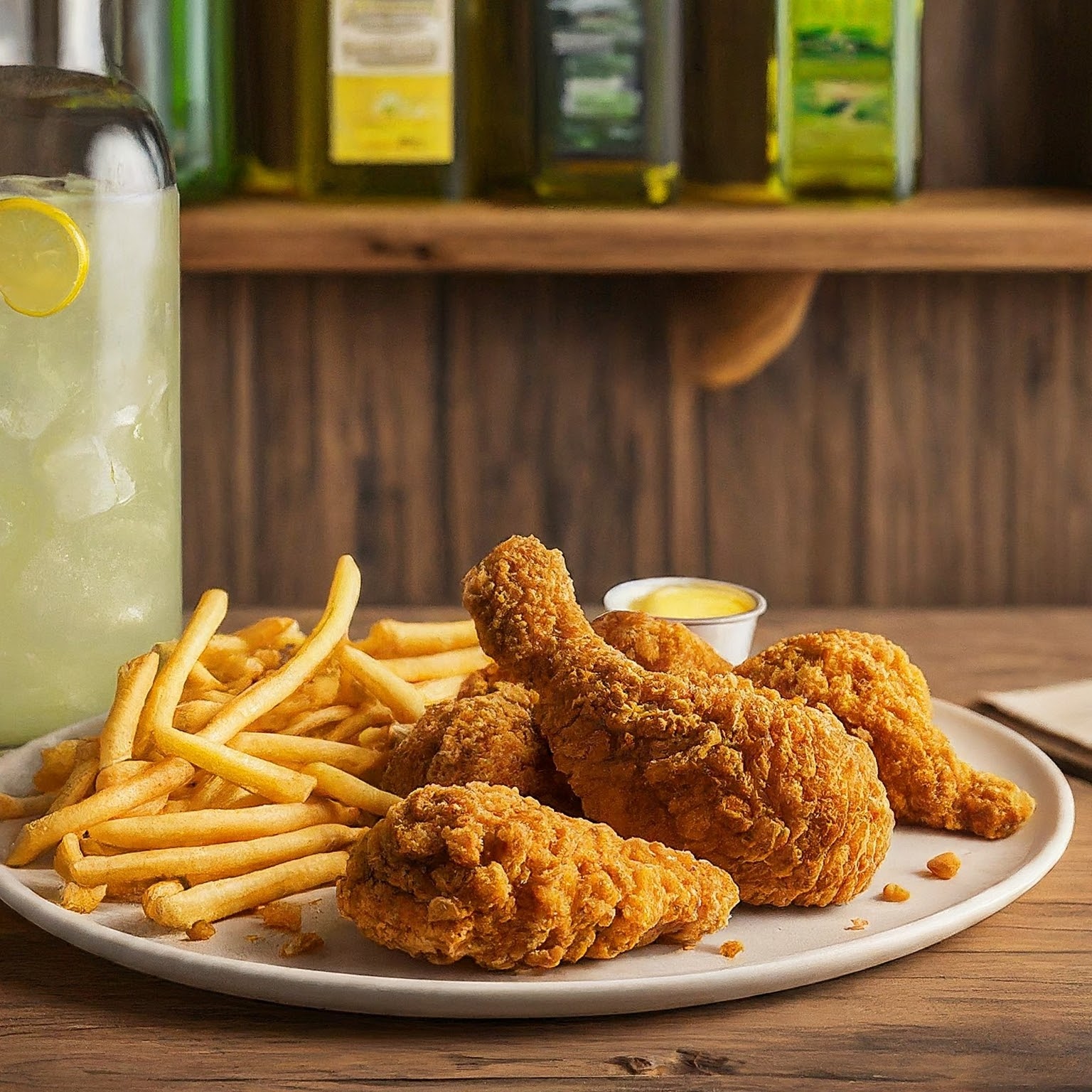
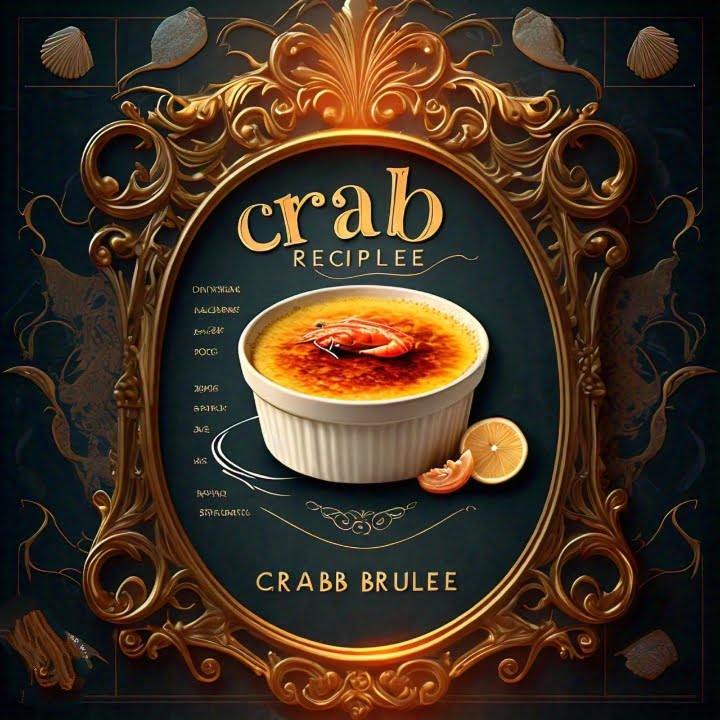
I remember as a kid buying this every fiesta in the barrio, as I recalled it’s just rice, baking powder and a little salt. I remember being served with grated coconut and toping with cheese. it’s delicious